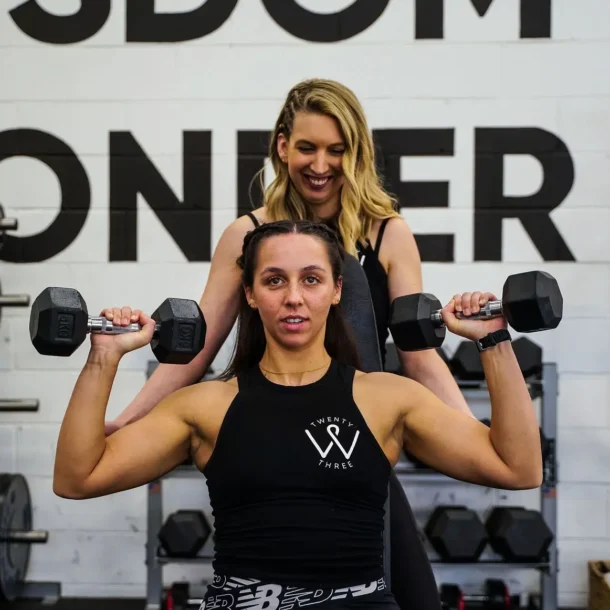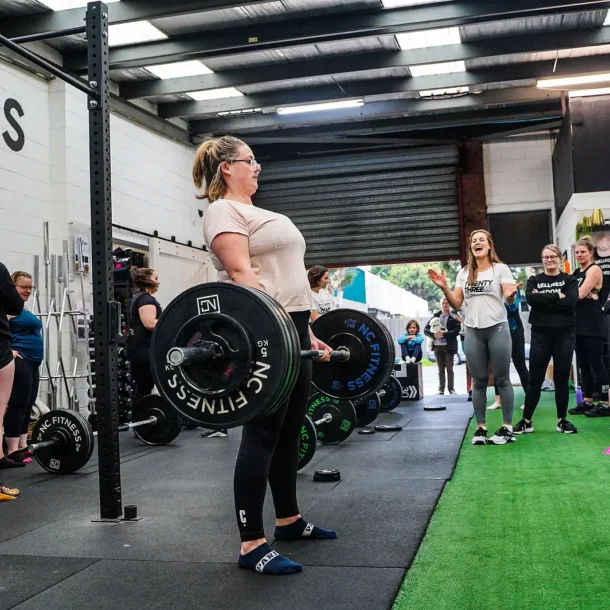

About My Running History…
Have you wanted to become a better runner? Maybe you find yourself gasping for air and wondering how good runners make it all look so effortless. Before we dive into the nuts and bolts of running mechanics and proven techniques, I thought I would share a little about my history in this sport.
I was always a very active kid and teenager. I did swimming, netball and gymnastics from a young age. I excelled in gymnastics and netball due to my speed and power and after I injured myself in gymnastics, I began competitive athletics. I started training when I was 12 years old and quickly found the 200m to be my preferred event. I also competed in the 100m and 400m as well as 4X100m, 4X200m, 4X400m and medley relays. During the school season we would train 3X week and compete on Saturdays. I was very competitive and compiled an excel spreadsheet tracking the events I competed in and the times and place every week.
Each school season was punctuated with several state and national competitions as well as optional competitions, which I always did. We became state 4X100, 4X200 and medley relay champions several times and medalled at the national level, but never gold – damn you Queensland! I often miss training and competing because athletics was and still is my absolute favourite sport, I will watch any and every event in televised competitions.

Compiling this blog was an absolute joy and I have tried to cover every topic I could think of! The foundation for running is always the same, regardless of the distance or level of skill so use the following blog as a building block for the type of running you love doing be it sprinting or distance!

Correct Running Technique
Correct breathing will help you run economically. Start by breathing into your belly instead of shallow chest breathing. This helps increase oxygen uptake by pushing the breath to the bottom of the lungs so it remains there slightly longer.
– A conscious deep exhale will trigger a deep inhale which improves oxygen uptake.
– Breathing through your nose limits the amount of air coming in, it is more efficient to breath in and out through the mouth. A light jog won’t be affected by nose breathing but as intensity increases (if we do sprints to high street) then you will fatigue faster breathing through your nose.
– Breathing pattern: Inhale and exhale for the same number of strides. For a sprint it usually translates to a 1:1 stride to breath ratio. For medium to low intensity you can take 2-3 strides per inhale and 2-3 strides per exhale.
– Try a few to find what is most comfortable for you. It is always better to focus on the long deep inhale and exhale and then work to a stride number when you are comfortable breathing deeply into your diaphragm.
What Is A Stitch?
Our diaphragm sits our abdomen beneath our lungs. It is the major muscle involved in breathing and when we run, our blood is pumped at an increased rate to our limbs, away from our diaphragm. This reduction in blood supply can result in a cramp.
2. The Foot Strike
This relates to how your front foot lands on the ground. See the image below, a good foot strike should see you land mid foot and under your centre of gravity with a slight forward lean.

3. The Leg Movement
Some important point to remember is that:
– The leg behind the body should have a heel lift.
– Shin of trailing leg should reach at least parallel to the ground.
– At a sprint you almost kick your bum, at slower speeds it is less extreme but still important to lift the back shin and heel to close to parallel. This allows you to drive the knee higher as it comes forward.

4. Your Torso
Do
– Run tall, elevate your chest and keep your gaze forward. Some people find running with a slight forward hinge to be more helpful. This opens your diaphragm and lets you breathe efficiently.
– Allow for slight natural rotation through your torso as your weight shifts. As you land on your left leg and your right arm comes forward and there is a shift in weight distribution.
Don’t
– ‘Sit’ into the movement. Focus on pressing your hips forward, this allows your knee lift up efficiently.



5. The Arm Movement
Do
– Gaze forward so shoulders can relax
– Hold an arm angle of about 90 degrees
– Relax your hands (you are holding an egg you don’t want to break – make a gentle fist)
– Move your arms in line with your body (See above images)
Don’t
– Let your hands cross your mid line or tense your shoulders. See images below – with my chin tucked, my shoulders creep up slightly. I have no lift or drive through my arms and in the first image you see where the shadow of my right arm has crossed my midline.


The videos below are demonstrations of poor, average and good running technique in order that they appear.
Frequently Asked Questions
How do I structure a running program?
Example Beginner Runs
For time: 20 minutes – 1 minute jogging, 1 minute walking X 10 rounds
For distance: 3km – 150m jogging, 150m walking X 10 rounds.
Tips For Beginners
How do I return back to running after having a baby? What is my pelvic floor?
Your pelvic floor is your best friend – take care of it! During and after pregnancy it is important to work on rebuilding your pelvic floor. Why? Your pelvic floor is a muscular sling or hammock that stretches from tailbone to pubic bone and sideways to your hips. Its function is to support your bladder and colon – this is why many women experience bladder leakage post-partum, your pelvic floor is weakened from pregnancy and child birth – support the increased pressure from carrying a baby and supports lumbar spine and sacral stability. It is very common to experience a weakened pelvic floor, in fact, 1 in 3 women who have had a baby experience incontinence.
How do I strengthen my pelvic floor?
Essentially, you want to pull in and lift your pelvic floor as well as your transverse abdominis (TA). Your TA runs underneath your obliques and Rectus Abdominis (6-pack muscles). Your TA works to stabilize your lower back and pelvis and helps in engage your PF. There are several analogies for performing strengthening exercises for your pelvic floor – here are a few common ones. Perform these in any of the following positions: lying on your back, seated, in child’s pose or with your upper body supported on a bench or ball (this position helps you to disengage your glutes which are often recruited instead of your PF.)
Here is an analogy to help:
Tips and tricks
How do you know you are ready to run?
Running is considered a high impact activity. As such, it can be hard to do without experiencing leakage if you have a weakened PF. Concentrate on mastering your PF strengthening and relaxation exercises and when you feel like you are ready (it is
recommended to wait until after your 6-8 week check up for a vaginal birth and after 11-12 weeks post c-section) you can begin a modified running routine.
What are some other running drills and tips?
How to prevent against knee pain during or after a run?
How does strength training help?
Cross training is important to develop the strength and muscular endurance to run. Squats and deadlifts will help you build the muscles in your lower body which are recruited each time you take a step. Strength training also helps with injury prevention by increasing the strength of muscles and tendons and encouraging flexibility in your ligaments, decreasing the risk of a ligament being torn. Focus on building an equal proportion of strength through all your lower body muscles so that they are balanced. If your quads are weaker than your hamstrings you are more liable to injury – these muscles work together and the load, whether it be from running or strength training, should be evenly distributed. Weight training, balance training and functional movement training all assist in developing the muscle power and control you need to run.

Ange Drake is an personal trainer, women’s empowerment coach and fitness blogger in the northern suburbs of Melbourne. She is the director of one of the few womens’ only strength training gyms in Melbourne, 23W. Ange helps women to learn how to use strength based training, nutritional strategies and a positive mindset to transform their bodies, relationship with food and mind.
Can’t decide which of our packages is best suited for you? Take our questionnaire to help you decide!





